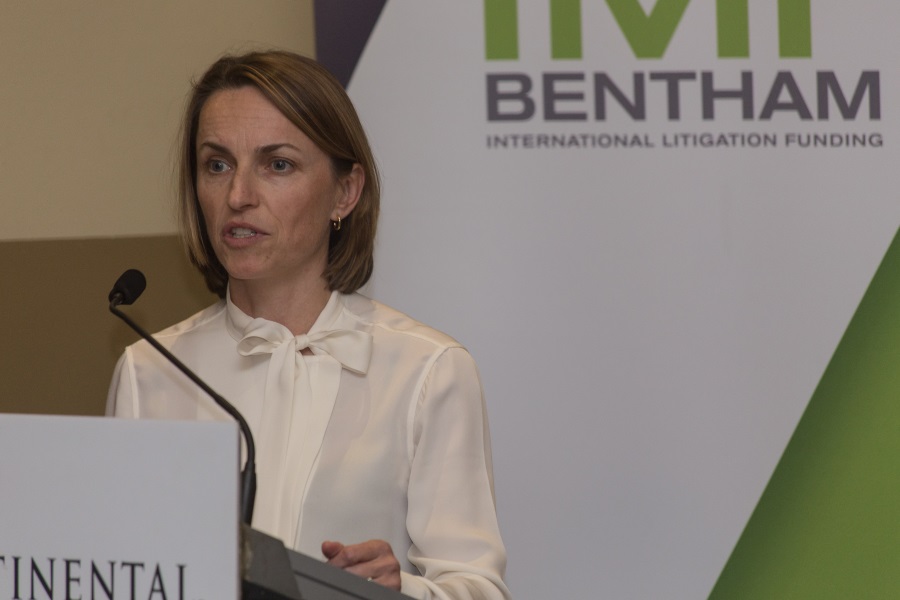Achieving fair and efficient Class Action Settlements

Australia’s leading funder, IMF Bentham Limited, has collaborated with the University of New South Wales to support research into important issues at the cutting edge of class action litigation. Some of these issues were debated at an important conference held on 1 June 2017 under the auspices of the IMF Bentham Class Actions Research Initiative with UNSW.
The conference examined three ‘hot topics’ in class actions today, with one in particular dealing with the important issue of whether current arrangements for distributing class action settlements are fair and efficient.
The topic of settlement distribution schemes (SDS), has achieved considerable prominence recently. This is because of the high settlement rate of class actions, sizeable recent settlements, and the time and substantial cost involved in administering some of the more complex SDSs. For example, the Victorian “Black Saturday” bush fires class actions settled for a total of $800m, took nearly 2 years for the claimants’ lawyers Maurice Blackburn to allocate and distribute to class members, and cost in the region of $29m to administer.[1]
Associate Professor Michael Legg from UNSW and Maurice Blackburn Principal Rebecca Gilsenan presented a joint paper on Australian class action SDS design.[2] A SDS is the mechanism by which a settlement fund is divided up and allocated to class members in accordance with their entitlements as assessed by the scheme administrator (usually a senior lawyer who acted for the applicant in the class action). All class action settlements, and associated SDSs, must be approved by the Court. Settlements and SDSs must be ‘fair and reasonable’ and ‘in the interests of class members and the applicant’.
SDS design varies considerably depending on the nature of the claims concerned – a SDS for a shareholder class action (where distributions can be determined by a mathematical formula tied to share prices) is considerably less complicated than one involving ‘mass tort’ claims, such as the bushfire claims which involved personal injury, dependency and property claims calling for personalised assessment. Detailed examples were given by the authors of different SDSs.
In their paper, the authors noted the “difficult trade-offs” that are involved in “seeking to balance precision [i.e. class members being paid what they are entitled to under law] with minimising costs and delay.” As Osborn J said of the Kilmore East bushfire settlement:
“the potential claims are so heterogeneous that unless some simplified scheme of assessment is provided, the process of assessment of damages will be impractically costly, contentious and delayed.”[3]
Numerous issues raised by SDS design were discussed, including:
- Does the scheme administrator need to be a lawyer?Can other professionals fulfil that role efficiently and cost-effectively?
- Should ‘matrix’ or ‘grid’ SDSs, which are common in the US, be used in Australia?Under a matrix, class members’ entitlements are determined by which cell in the matrix they fall into, with the cells being determined by claim type and loss categories.Matrix settlements have the advantage of speed and low cost, but are less accurate than other forms of SDS.
- Should interim payments be made to class members before all allocations have been finally determined?Getting money out quickly to traumatised victims is important, but if too much is paid out early, some class members may ultimately end up being short changed.Forrest J noted, in the bush fires settlement, that if the scheme administrator does not know exactly the amount payable to each class member, the administrator “cannot make the pro rata allocation necessary to ensure there is an equitable distribution.”
- Surprisingly, the Court cannot review an individual class member’s assessment if the SDS procedures have been followed[4], although the Court can amend a SDS to overcome any procedural unfairness and SDSs invariably contain appeal or review mechanisms.Scheme administrators can have a wide discretion under a SDS, including whether to make interim distributions.In one class action, the NSW Supreme Court stated that the administrator had “the same immunities from suit as a Judge of the Supreme Court of New South Wales.”[5]
To watch the presentation by Rebecca Gilsenan and Associate Professor Michael Legg from the IMF Bentham and UNSW Class Action Conference, please visit IMF's Class Action Centre.
[1] Matthews v AusNet Pty Ltd & Ors (Ruling No 44) [2016] VSC 732, [13].
[2] Rebecca Gilsenan and Michael Legg, ‘Australian Class Action Settlement Distribution Scheme Design’ (Paper presented at the IMF Bentham/UNSW Class Actions Conference, Sydney, 1 June 2017).
[3] Matthews v AusNet Electricity Services Pty Ltd [2014] VSC 663, [420].
[4] Matthews v AusNet Pty Ltd (Ruling No 43) [2016] VSC 583, [30]; Matthews v AusNet Pty Ltd (Ruling No 45) [2017] VSC 187, [40]; contra Pharm-a-Care Laboratories Pty Ltd v Commonwealth of Australia (No 11) [2012] FCA 105, [19].
[5] Johnson v Endeavor Energy [2016] NSWSC 1132, [37].